How do I deal with the gag reflex?
Dealing with a gag reflex during scaling and root planning can be challenging, but there are effective methods to manage it.
Methods to Manage Gag Reflex
- Low-Level Laser Therapy (LLLT) on Acupoint PC6:LLLT, also known as laser acupuncture, is a modern and practical method to suppress the gag reflex. It involves stimulating the PC6 acupoint on the wrist using a diode laser. This method is noted for its low invasiveness, high safety, and efficiency, making it a preferred choice in dental settings. It has been successfully used to control severe gag reflexes, allowing procedures like scaling and root planning to be completed without discomfort (Sarabadani & Samiee, 2021).
- Hypnosis:Hypnosis is another effective technique for managing severe gag reflexes. It involves sessions that use eye fixation, progressive muscle relaxation, and guided imagery to reduce the gag reflex to a manageable level. This method has been successfully applied in dental treatments, including root canal therapy, by controlling the gag reflex through psychosomatic management (Ramazani et al., 2016).
Conclusion: Both low-level laser therapy on the PC6 acupoint and hypnosis are effective methods for managing the gag reflex during dental procedures like scaling and root planning. These techniques offer non-invasive and practical solutions, allowing patients to undergo necessary dental treatments comfortably.
How do I reduce sensitivity experienced by patients in lower anterior region during scaling?
To reduce sensitivity in the lower anterior region during scaling and root planing, several strategies can be considered based on current research.
Use of Lasers
- Er:YAG Laser: Utilizing Er:YAG lasers as an adjunct to conventional scaling and root planing (SRP) can reduce post-operative sensitivity. This method has shown similar clinical improvements to traditional SRP but with less sensitivity reported by patients (Abud et al., 2021; Lei et al., 2018).
Adjunctive Therapies
- Chlorhexidine Chip: Incorporating a controlled-release chlorhexidine chip can enhance treatment outcomes by reducing probing depth and improving attachment levels, although it may cause minor transient sensitivity (Jeffcoat et al., 1998).
- Low-Level Laser Therapy (LLLT) and Photodynamic Therapy (PDT): These therapies, when used alongside SRP, have been shown to significantly reduce gingival inflammation and bacterial counts, potentially minimizing sensitivity (Gandhi et al., 2019).
Pain Management
- Photobiomodulation (PBM): This technique can alleviate dentinal hypersensitivity by modulating pain, although specific protocols for its application post-SRP are still being developed (Garcia-Olazabal et al., 2023).
- Anesthetic Options: Using injected anesthetics rather than topical ones can decrease pain intensity during the procedure, which might help in managing sensitivity (Wambier et al., 2017).
Patient Education and Management
- Awareness and Expectation Management: Educating patients about the potential for increased sensitivity following periodontal therapy is crucial. Sensitivity typically peaks 1-3 weeks post-treatment and then decreases (Von Troil et al., 2002).
Conclusion: To mitigate sensitivity in the lower anterior region during scaling and root planing, consider using laser-assisted techniques, adjunctive therapies like chlorhexidine chips, and effective pain management strategies. Educating patients about the temporary nature of sensitivity can also help manage expectations and improve their overall experience.
How do I reduce post-operative sensitivity?
To reduce post-operative sensitivity following scaling and root planing, several strategies and treatments have been evaluated. Here are some effective methods based on recent research:
Desensitizing Agents
- Gluma® and D/Sense®: Gluma® has been shown to significantly reduce root sensitivity more effectively than D/Sense® in the initial weeks following treatment. Both agents eventually provide similar relief by the sixth week (Al-Qahtani, 2019).
- Casein Phosphopeptide-Amorphous Calcium Phosphate (CPP-ACP) and HEMA-G: These agents have demonstrated significant short-term reductions in dentine hypersensitivity compared to controls, with effects noticeable as early as 10 days post-treatment (Gugnani et al., 2008).
Photobiomodulation
- Photobiomodulation (PBM): This technique, although lacking a standardized protocol, has been shown to alleviate dentinal hypersensitivity by modulating pain, with assessments indicating reduced sensitivity after 7 days and 1 month (Garcia-Olazabal et al., 2023).
Laser Treatment
- Er:YAG Laser: When used adjunctively with scaling and root planing, Er:YAG lasers have shown to provide additional short-term effectiveness in reducing sensitivity and improving patient comfort compared to traditional methods (Abud et al., 2021; Lei et al., 2018).
General Recommendations
- Patient Awareness: Patients should be informed about the potential for increased sensitivity following treatment, which typically peaks within 1-3 weeks and then decreases (Von Troil et al., 2002).
- Combination Therapies: Combining mechanical debridement with chemical or laser treatments can enhance outcomes and reduce sensitivity (Abud et al., 2021; Lei et al., 2018).
Conclusion: To effectively manage post-operative sensitivity after scaling and root planing, clinicians can consider using desensitizing agents like Gluma® or CPP-ACP, employing photobiomodulation, or integrating laser treatments such as Er:YAG. These methods have shown varying degrees of success in reducing sensitivity and improving patient comfort in the short term.
What is a logical explanation for bursting myths related to scaling such as scaling weakens teeth?
Myth: Scaling Weakens Teeth
One common myth is that dental scaling weakens teeth. This misconception is prevalent among various populations, as evidenced by studies conducted in different regions. For instance, a study in Peshawar, Pakistan, found that 44% of participants believed scaling could weaken teeth (Hashim et al., 2020). Similarly, research in Lahore highlighted that 54% of respondents thought scaling loosens teeth, indicating a widespread belief in this myth (Farooq & Bukhari, 2016).
Evidence Against the Myth
- Clinical Benefits of Scaling: Dental scaling is primarily aimed at removing plaque and tartar, which are detrimental to oral health. Regular scaling has been shown to reduce tooth loss and lower healthcare costs related to conditions like diabetes and myocardial infarction (Matthews & Al-Waeli, 2024). This suggests that rather than weakening teeth, scaling helps maintain oral health by preventing periodontal diseases.
- Patient Perceptions and Experiences: A study conducted in Pakistan revealed that while many patients initially feared scaling due to myths about increased pain and tooth mobility, the majority found the treatment beneficial after experiencing it. About 93.3% of patients reported positive outcomes and would recommend scaling to others (Zara et al., 2022). This indicates that firsthand experience often dispels myths about scaling.
- Sensitivity and Recovery: Post-scaling sensitivity is a common concern, but it is typically temporary. In a study, 56.3% of participants experienced sensitivity after scaling, which was relieved within a week for most (Zara et al., 2022). This temporary sensitivity is often mistaken for weakening of the teeth, but it is a normal part of the recovery process as the gums heal and adjust.
- Importance of Education: The persistence of myths about dental scaling underscores the need for better education and communication between dental professionals and patients. Educating patients about the actual benefits and temporary side effects of scaling can help dispel myths and encourage more individuals to seek necessary dental care (Zara et al., 2022; Farooq & Bukhari, 2016).
Conclusion: The myth that scaling weakens teeth is unfounded and largely stems from a lack of awareness and understanding of the procedure. Evidence shows that scaling is beneficial for maintaining oral health and preventing tooth loss. Temporary sensitivity post-scaling is normal and should not be confused with weakening of the teeth. Proper education and communication can help dispel these myths and promote better oral health practices.
References
- Sarabadani, J., & Samiee, N. (2021). Suppressing Gag Reflex with Low-Level Laser Therapy on Acupoint PC6: A Case Report. **, 28, 399-403. https://doi.org/10.22062/JKMU.2021.91721
- Ramazani, M., Zarenejad, N., Parirokh, M., & Zahedpasha, S. (2016). How Can Hypnodontics Manage Severe Gag Reflex for Root Canal Therapy? A Case Report. Iranian Endodontic Journal, 11, 146 – 149. https://doi.org/10.7508/iej.2016.02.015
- Abud, D., Shariff, J., Linden, E., & Kang, P. (2021). Er:YAG versus Scaling and Root Planing for the Treatment of Periodontal Disease: A Single-Blinded Split-Mouth Randomized Clinical Trial.. Journal of periodontology. https://doi.org/10.1002/JPER.21-0133
- Von Troil, B., Needleman, I., & Sanz, M. (2002). A systematic review of the prevalence of root sensitivity following periodontal therapy.. Journal of clinical periodontology, 29 Suppl 3, 173-7; discussion 195-6. https://doi.org/10.1034/J.1600-051X.29.S3.10.X
- Jeffcoat, M., Bray, K., Ciancio, S., Dentino, A., Fine, D., Gordon, J., Gunsolley, J., Killoy, W., Lowenguth, R., Magnusson, I., Offenbacher, S., Palcanis, K., Proskin, H., Finkelman, R., & Flashner, M. (1998). Adjunctive use of a subgingival controlled-release chlorhexidine chip reduces probing depth and improves attachment level compared with scaling and root planing alone.. Journal of periodontology, 69 9, 989-97. https://doi.org/10.1902/JOP.1998.69.9.989
- Gandhi, K., Pavaskar, R., Cappetta, E., & Drew, H. (2019). Effectiveness of Adjunctive Use of Low-Level Laser Therapy and Photodynamic Therapy After Scaling and Root Planing in Patients with Chronic Periodontitis.. The International journal of periodontics & restorative dentistry, 39 6, 837-843. https://doi.org/10.11607/prd.4252
- , L., Zhang, X., , Z., Shi, H., Zhang, Y., Wu, M., & Cui, W. (2018). Clinical Effectiveness of Er: YAG Lasers Adjunct to Scaling and Root Planing in Non-Surgical Treatment of Chronic Periodontitis: A Meta-Analysis of Randomized Controlled Trials. Medical Science Monitor : International Medical Journal of Experimental and Clinical Research, 24, 7090 – 7099. https://doi.org/10.12659/MSM.911863
- Garcia-Olazabal, M., Pascuali-Moya, L., Consolandich-Cirisola, R., Sobral, A., Bruno, L., Safi, F., Longo, P., Chavantes, M., Navarro, R., Duran, C., Fernandes, K., Ferrari, R., Bussadori, S., Motta, L., & Horliana, A. (2023). Evaluation of tooth sensitivity after scaling and root planing treated with photobiomodulation: a randomized controlled split-mouth double-blind clinical protocol. **. https://doi.org/10.1101/2023.09.28.23296306
- Wambier, L., De Geus, J., Boing, T., Chibinski, A., Wambier, D., Rêgo, R., Loguércio, A., & Reis, A. (2017). Intrapocket topical anesthetic versus injected anesthetic for pain control during scaling and root planing in adult patients: Systematic review and meta-analysis.. Journal of the American Dental Association, 148 11, 814-824.e2. https://doi.org/10.1016/j.adaj.2017.06.019
- Al-Qahtani, S. (2019). Evaluation and Comparison of Efficacy of Gluma® and D/Sense® Desensitizer in the Treatment of Root Sensitivity Induced by Non-Surgical Periodontal Therapy. Open Access Macedonian Journal of Medical Sciences, 7, 1685 – 1690. https://doi.org/10.3889/oamjms.2019.344
- Gugnani, S., Gupta, R., & Pandit, N. (2008). Quintessenz Journals.
- Garcia-Olazabal, M., Pascuali-Moya, L., Consolandich-Cirisola, R., Sobral, A., Bruno, L., Safi, F., Longo, P., Chavantes, M., Navarro, R., Duran, C., Fernandes, K., Ferrari, R., Bussadori, S., Motta, L., & Horliana, A. (2023). Evaluation of tooth sensitivity after scaling and root planing treated with photobiomodulation: a randomized controlled split-mouth double-blind clinical protocol. **. https://doi.org/10.1101/2023.09.28.23296306
- Von Troil, B., Needleman, I., & Sanz, M. (2002). A systematic review of the prevalence of root sensitivity following periodontal therapy.. Journal of clinical periodontology, 29 Suppl 3, 173-7; discussion 195-6. https://doi.org/10.1034/J.1600-051X.29.S3.10.X
- Abud, D., Shariff, J., Linden, E., & Kang, P. (2021). Er:YAG versus Scaling and Root Planing for the Treatment of Periodontal Disease: A Single-Blinded Split-Mouth Randomized Clinical Trial.. Journal of periodontology. https://doi.org/10.1002/JPER.21-0133
- , L., Zhang, X., , Z., Shi, H., Zhang, Y., Wu, M., & Cui, W. (2018). Clinical Effectiveness of Er: YAG Lasers Adjunct to Scaling and Root Planing in Non-Surgical Treatment of Chronic Periodontitis: A Meta-Analysis of Randomized Controlled Trials. Medical Science Monitor : International Medical Journal of Experimental and Clinical Research, 24, 7090 – 7099. https://doi.org/10.12659/MSM.911863
- Matthews, D., & Al-Waeli, H. (2024). Benefits of Dental Scaling and Polishing in Adults: A Rapid Review and Evidence Synthesis.. JDR clinical and translational research, 23800844241271684. https://doi.org/10.1177/23800844241271684
- Hashim, Z., Gilani, S., Kabir, S., Israr, M., Khan, M., & Riasat, M. (2020). FAKE NEWS, MYTHS AND REMEDIES REGARDING ORAL HEALTH CARE IN PATIENTS COMING TO A RIVATE TEACHING DENTAL HOSPITAL OF PESHAWAR, PAKISTAN.. Journal of Khyber College of Dentistry. https://doi.org/10.33279/jkcd.v10i03.211
- Zara, B., Naz, F., Siddique, S., Fatima, A., Khan, F., & Abbas, B. (2022). Perception of Patients Regarding Dental Scaling and Aesthetics, Attending Dental Care in a Tertiary Care Hospital. Pakistan Journal of Medical and Health Sciences. https://doi.org/10.53350/pjmhs221631138
- Farooq, H., & Bukhari, S. (2016). MYTHS ASSOCIATED WITH DENTAL SCALING ( Study done by Pharmacy students / lecturer )

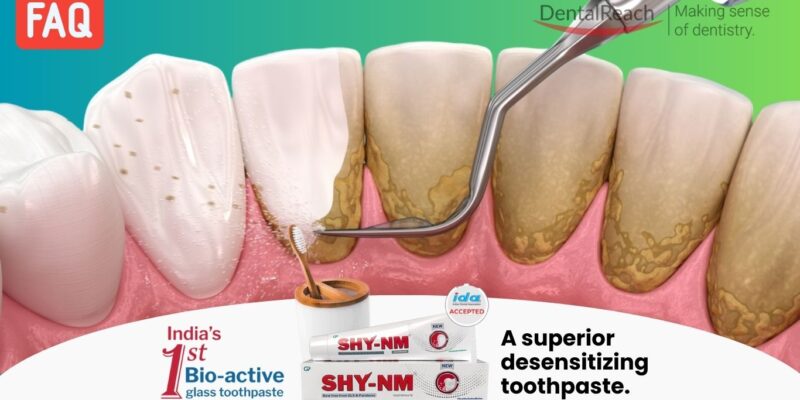






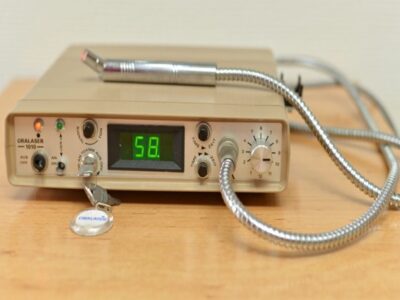
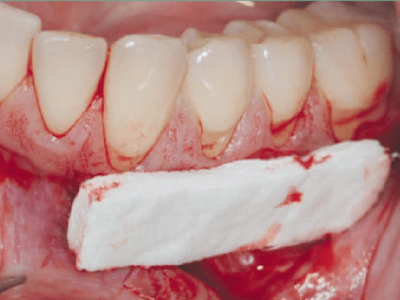
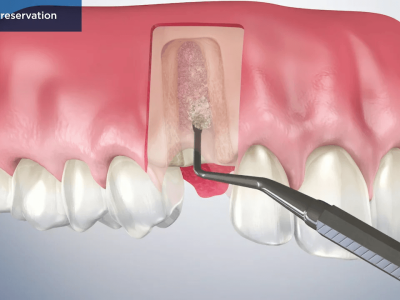





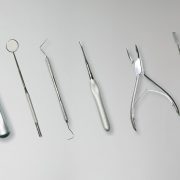



Comments